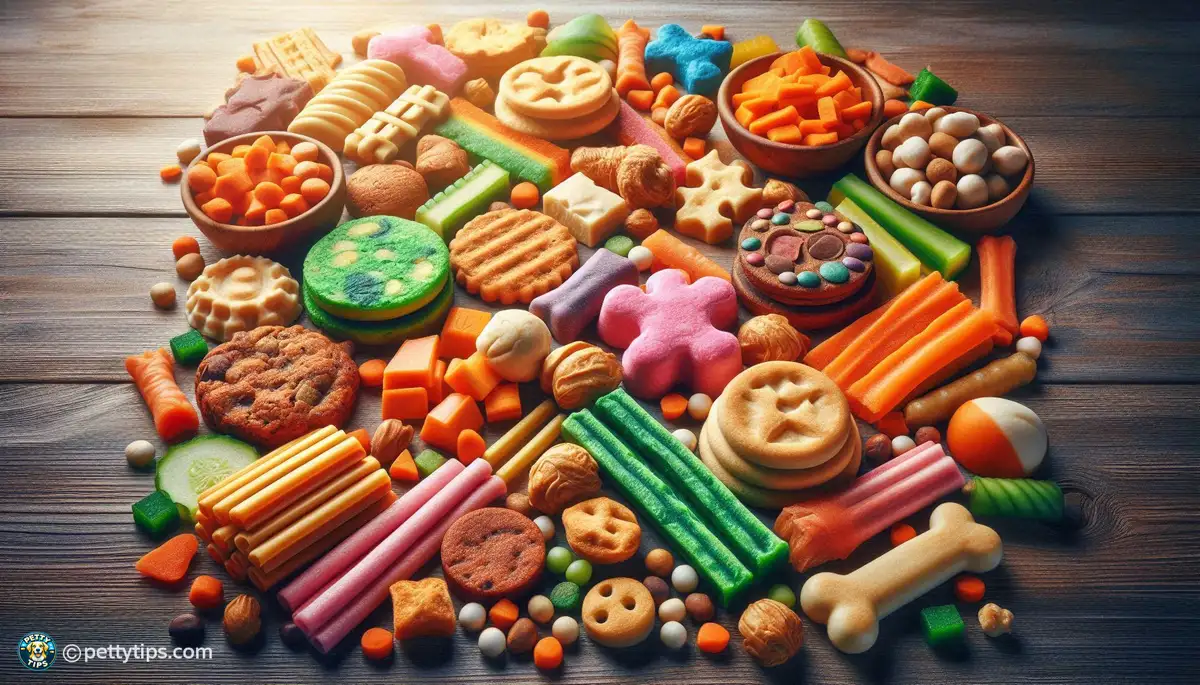- Home
- Pet Nutrition
- Quick and Easy Treats for Training Your Pet
Quick and Easy Treats for Training Your Pet

The Role of Treats in Positive Reinforcement
Treats are like gold nuggets in the world of pet training, serving as powerful motivators to encourage desired behaviors in our furry friends. They are the currency of positive reinforcement, which forms the backbone of effective training methods. When used correctly, treats can create a strong association between a specific action and a delightful reward, making learning an enjoyable experience for your pet.
Choosing the Right Treats for Your Pet
Not all treats are created equal when it comes to training. Opt for small, bite-sized treats that your pet can consume quickly without losing focus. Look for treats that are soft, aromatic, and irresistible to your pet's taste buds. Additionally, consider the nutritional value of the treats you select, ensuring they complement your pet's diet and contribute to their overall well-being.
Avoiding Overindulgence
While treats are essential tools in training, moderation is key to preventing overindulgence. Too many treats can lead to weight gain and health issues for your pet. Limit the use of treats to training sessions and avoid using them as a substitute for regular meals. Remember, the goal is to reinforce positive behaviors, not create a dependency on treats.
Homemade Treat Recipes for Your Pet
Peanut Butter Banana Bites
One of the simplest yet most beloved homemade treats for dogs is the peanut butter banana bite. Mash a ripe banana and mix it with a tablespoon of creamy peanut butter until smooth. Spoon small dollops of the mixture onto a baking sheet and freeze until firm. These frozen delights are not only delicious but also provide a refreshing treat for your furry companion on hot days.
Tuna Treats for Feline Friends
For our feline friends who have a penchant for seafood, tuna treats are a surefire hit. Simply drain a can of tuna packed in water and mix it with a small amount of plain yogurt or mashed cooked sweet potato. Form the mixture into small balls or flatten them into bite-sized discs. Refrigerate for a few hours until firm, and voila – you have a delectable treat that will have your cat purring with delight.
Sweet Potato Chewies
Sweet potatoes are not only nutritious but also make excellent chewy treats for dogs. Slice a sweet potato into thin rounds and bake them in the oven at a low temperature until they are crispy on the outside and chewy on the inside. These homemade chewies are not only delicious but also provide a satisfying outlet for your dog's natural urge to chew.
Incorporating Treats into Training Sessions
Timing is Everything
When using treats in training, timing is crucial. Deliver the treat immediately after your pet performs the desired behavior to reinforce the connection between the action and the reward. This instant gratification helps your pet understand what is expected of them and encourages them to repeat the behavior in the future.
Consistency is Key
Consistency is the cornerstone of effective training. Use the same verbal cues and hand signals consistently to help your pet understand what you want them to do. Similarly, be consistent in the type and timing of treats you use as rewards. This clarity and predictability will accelerate the learning process for your pet.
Gradually Phase Out Treats
While treats are indispensable during the initial stages of training, the ultimate goal is for your pet to respond to verbal commands and cues without the need for constant reinforcement. Once your pet has mastered a behavior, gradually reduce the frequency of treats and replace them with praise and affection. This gradual transition helps solidify the behavior and fosters a deeper bond between you and your pet.
Troubleshooting Common Training Challenges
Lack of Interest in Treats
If your pet shows little interest in treats during training sessions, it may be a sign that the treats you are using are not sufficiently enticing. Experiment with different types of treats to find what motivates your pet the most. You may need to adjust the flavor, texture, or size of the treats to pique their interest.
Treat Obsession
On the flip side, some pets may become overly fixated on treats, making it challenging to focus on training. If your pet becomes too preoccupied with the treats, try using lower-value treats or reducing the frequency of rewards. Additionally, incorporate more non-food rewards, such as playtime or verbal praise, to balance out the training experience.
Inconsistency in Rewarding Behaviors
Inconsistency in rewarding behaviors can lead to confusion and frustration for your pet. Make sure to reward your pet consistently for desired behaviors, even if they only partially perform the action correctly. This reinforces progress and encourages your pet to continue trying. Conversely, avoid rewarding unwanted behaviors, as this can reinforce negative habits and undermine the training process.
Conclusion
Training your pet is a rewarding journey that strengthens the bond between you and your furry companion. By incorporating quick and easy treats into your training regimen, you can effectively reinforce positive behaviors and shape your pet's conduct in a positive direction. Remember to choose high-quality treats, use them judiciously, and always prioritize your pet's well-being above all else. With patience, consistency, and a little creativity, you'll be amazed at what you and your pet can achieve together.
